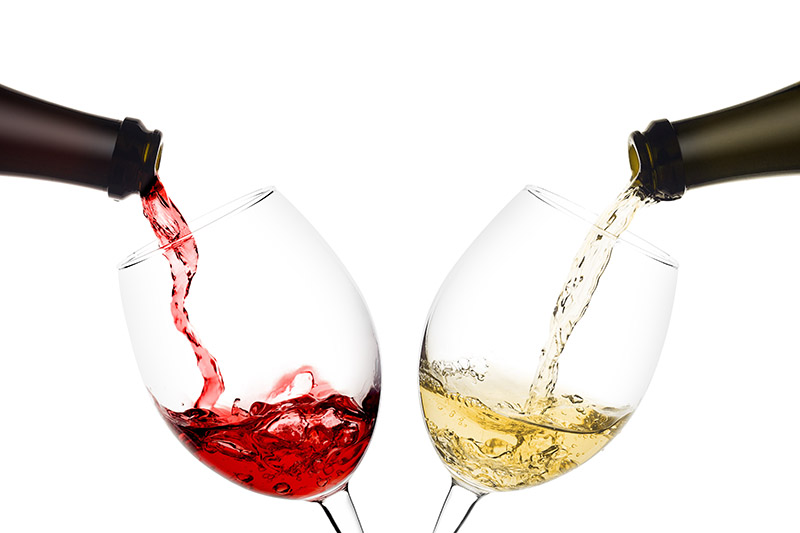The Rise of Non-Alcoholic Wine | A Comprehensive Guide

Non-alcoholic wine has become a growing trend among wine enthusiasts and casual drinkers alike, offering a sophisticated alternative to traditional alcoholic beverages. Whether you’re sober-curious, health-conscious, or simply looking for a way to enjoy the taste of wine without the intoxicating effects, non-alcoholic wine provides a viable solution. This article explores the world of non-alcoholic wine, delving into its history, production process, varieties, benefits, and how to choose the right one for your taste.
What is Non-Alcoholic Wine?
Non-alcoholic wine is exactly what it sounds like—a wine made without alcohol. Though it mimics the appearance, taste, and aroma of traditional wine, it contains little to no alcohol (usually less than 0.5% ABV). Unlike sparkling waters or juices, non-alcoholic wines are crafted using traditional winemaking techniques, allowing them to retain the complex flavors and characteristics of real wine but without the intoxicating effects.
Non-alcoholic wine is made by either removing the alcohol after fermentation or by stopping the fermentation process early. The result is a beverage that maintains the rich flavors of wine without the negative side effects associated with alcohol consumption.
The History of Non-Alcoholic Wine
The history of non-alcoholic wine dates back centuries. In ancient times, non-fermented grape juice was consumed for its health benefits and as a natural beverage. However, it wasn’t until the 20th century, particularly in the 1980s, that modern technology began to catch up with the demand for alcohol-free alternatives.
With growing awareness about the health risks of alcohol consumption, non-alcoholic beverages, including wine, gained popularity as a safe choice for people who wanted to enjoy a festive drink without the hangover. The increasing demand for non-alcoholic wine has sparked innovation within the winemaking industry, leading to the development of more refined and palatable alcohol-free options.
How is Non-Alcoholic Wine Made?
The production of non-alcoholic wine is quite similar to that of regular wine, but with a critical difference: the removal of alcohol or the prevention of alcohol formation. Here’s how it works:
Fermentation Process
The first stage of making non-alcoholic wine is similar to traditional winemaking. Grapes are harvested, crushed, and fermented. During fermentation, yeast converts sugars in the grapes into alcohol. However, in the case of non-alcoholic wine, this process is controlled to either stop early or the alcohol is removed.
Alcohol Removal
Once the wine has fermented and the alcohol is present, the next step is to remove it. There are various methods for this:
-
Vacuum Distillation: This involves heating the wine under a vacuum, allowing the alcohol to evaporate at a lower temperature, preserving the wine’s flavor.
-
Reverse Osmosis: This method filters the alcohol from the wine using a special membrane, separating the alcohol from the wine while retaining most of the flavors.
-
Spinning Cone Column: A more advanced technique that uses centrifugal force to remove alcohol, preserving the delicate flavors of the wine.
Final Adjustments
After the alcohol is removed, the wine may undergo further processes to improve its flavor, texture, and color. Some producers also reintroduce certain concentrated flavors, such as grape juice, to balance the taste of the wine.
Varieties of Non-Alcoholic Wine
Non-alcoholic wines come in a variety of styles, just like their alcoholic counterparts. Here are some of the most popular types:
Non-Alcoholic Red Wine
Red wines are known for their rich, full-bodied flavor. Non-alcoholic red wines often retain deep fruit flavors such as cherry, blackberry, and plum, with some versions offering notes of spice or oak. Non-alcoholic reds are a great choice for pairing with hearty foods like grilled meats, stews, and pasta dishes.
Non-Alcoholic White Wine
White wines, known for their crisp and refreshing qualities, are available in non-alcoholic versions as well. These wines often feature fruity flavors like green apple, pear, and citrus, with a balanced acidity. Non-alcoholic white wines are ideal for lighter meals such as seafood, salads, and poultry.
Non-Alcoholic Sparkling Wine
Sparkling wines, such as Champagne or Prosecco, are another popular non-alcoholic option. These wines are known for their effervescence and can be enjoyed at celebrations or casual gatherings. The best non-alcoholic sparkling wines maintain a refreshing, bubbly character while offering fruity and floral notes.
Non-Alcoholic Rosé Wine
Rosé wines have gained immense popularity in recent years, and now you can find alcohol-free versions of this light, fruity wine. Non-alcoholic rosé typically has a mix of berry flavors like strawberry and raspberry, making it a perfect drink for a warm day or a casual brunch.
Health Benefits of Non-Alcoholic Wine
While many people enjoy non-alcoholic wine simply for its taste, there are also numerous health benefits associated with drinking it. Here are a few reasons why non-alcoholic wine might be a better option for some:
Lower Calorie Count
Non-alcoholic wines generally have fewer calories than their alcoholic counterparts. Alcohol is calorie-dense, so by removing it, non-alcoholic wine can be a great option for those looking to reduce their calorie intake.
Improved Hydration
Alcohol is a diuretic, which means it causes dehydration. Non-alcoholic wine, on the other hand, helps maintain hydration while still offering the satisfying flavors of wine.
Better Sleep
Alcohol is known to disrupt sleep patterns, causing restless nights and reduced quality of sleep. Non-alcoholic wine, with its lack of alcohol, is less likely to interfere with sleep, making it a better option for evening relaxation.
Antioxidants and Polyphenols
Like regular wine, non-alcoholic wine contains antioxidants and polyphenols that can promote heart health and fight inflammation. These compounds help protect against oxidative stress and can contribute to overall well-being.
No Hangovers
One of the most significant advantages of non-alcoholic wine is the absence of hangovers. Without the alcohol content, you can enjoy the experience of drinking wine without the risk of a headache or nausea the next day.
How to Choose the Best Non-Alcoholic Wine
Choosing a non-alcoholic wine can be a daunting task given the variety of options available. Here are some tips to help you pick the perfect bottle:
Consider the Flavor Profile
When selecting a non-alcoholic wine, consider what flavors you enjoy in traditional wines. If you like fruity wines, look for reds or whites with bold berry flavors. If you prefer something light and refreshing, a sparkling or rosé might be your best choice.
Check the Sugar Content
Some non-alcoholic wines have added sugars to enhance flavor, so be sure to check the label. Opt for wines with lower sugar content if you’re looking for a more natural taste.
Read Reviews
Many non-alcoholic wines are reviewed online, so reading customer feedback can give you a sense of whether the wine is worth trying. Look for wines with good reviews for both flavor and overall quality.
Consider the Brand
Some wineries are known for producing high-quality non-alcoholic wines. Brands like Fre and Lussory have a reputation for offering excellent alcohol-free options. Stick to trusted brands to ensure a good experience.
Pairing Non-Alcoholic Wine with Food
Non-alcoholic wine can be paired with food just like traditional wine. Here are some food pairings to consider:
-
Red Wine: Pair non-alcoholic red wines with rich dishes like steak, roasted meats, or pasta with tomato-based sauces.
-
White Wine: Non-alcoholic whites work well with seafood, poultry, and creamy pasta dishes.
-
Sparkling Wine: These are great for celebrations and pair well with light appetizers, salty snacks, or even fried foods.
-
Rosé Wine: Non-alcoholic rosé is perfect for summer meals, including grilled vegetables, fresh salads, or light pasta.
Conclusion
Non-alcoholic wine offers a fantastic alternative for those who want to enjoy the taste of wine without the effects of alcohol. Whether you’re avoiding alcohol for health reasons, designating yourself as a driver, or just prefer the flavor, non-alcoholic wine provides a versatile and satisfying option. With a variety of styles and flavors available, there’s a non-alcoholic wine for every palate. As the demand for alcohol-free options continues to rise, it’s clear that non-alcoholic wine is here to stay.


